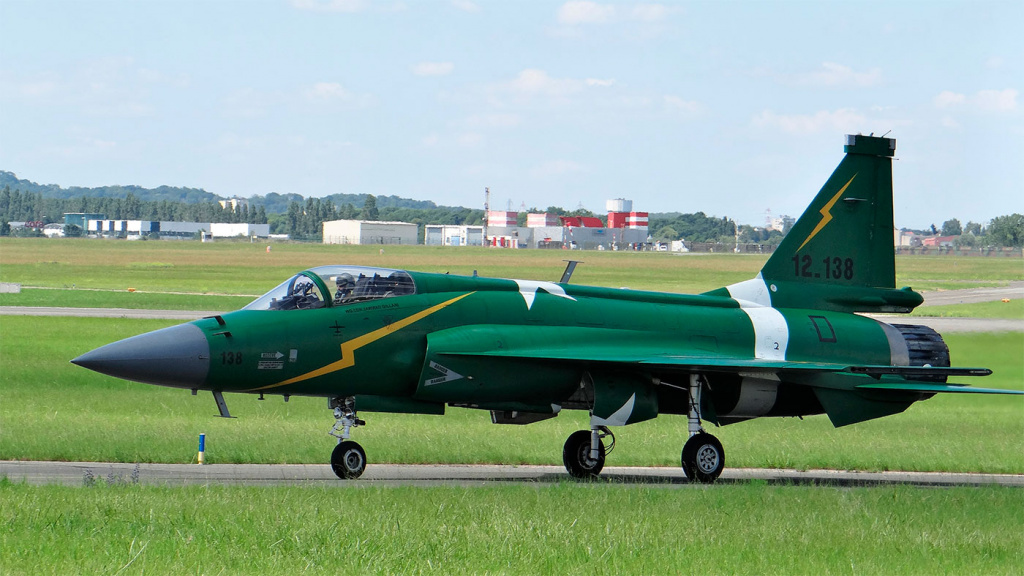Smaller but Capable: How Pakistan Air Force Deters Indian Air Force
In
Log in if you are already registered
In modern warfare, without control over skies, the likelihood of a successful military operation remains far-fetched. In the past, air power was primarily gauged by the numerical strength and ability to employ brute force in combat. But modern air power has become a function of synergizing combat and support assets for exertion of graduated firepower for undermining adversary in psychological and kinetic domains. The efficiency of modern air power is chiefly based upon: network centricity via sensor fusion for comprehensive situation awareness; precise and stand-off strike capability; look first and shoot first advantage; and the efficient employment of electromagnetic prowess.

The air power plays centerline role in Indo-Pak strategic environment. Being a smaller force with limited resources, Pakistan Air Force (PAF) has traditionally followed offensive defense posture. The notion behind this posture is to achieve psychological dominance over the adversary in the earliest phase of conflict to accomplish escalation control. At a later stage, to maintain credible A2/AD envelope over own air space to degrade enemy’s air, land and naval offensive operations. This includes efficient employment of available forces, high level of readiness, and progressive improvements in its doctrinal framework with respect to emerging technologies.
PAF is currently structured around a compound fleet of modern and previous generation combat aircrafts augmented by an ample number of force multipliers, i.e. AEW&Cs and EW/ELINT aircrafts. Historically, PAF has emphasized on the policy of procurement of high end assets from foreign sources and supplementing it with indigenous projects to constitute the bulk of forces. For example, F-16 Fighting Falcons, (AM/BM and C/D configuration) continues to manifest force’s amalgam of cutting edge technology and diverse experience. This has been augmented by recent procurement of J-10C Vigorous Dragon from China. J-10C has allowed PAF to employ new high-end Chinese weapons and sensor suite including PL-10 HOBS missile, PL-15 dual pulse BVR missile, Infrared Search and Track (IRST) and Active Electronically Scanned Array (AESA) radar.
Meanwhile, the joint production of Jf-17 Thunder program has contemplated advantages of its own. These advantages include: the aversion of the obsoleteness crisis by replacing outdated aircrafts and diffusion of modern capabilities to the entirety of fleet without outstretching the budgetary limitations. Currently, Jf-17 Block-III is the most capable version and has introduced a new set of technologies like AESA radar, and next generation weapon air-to-air missiles, and a host of precise and stand-off air to ground munitions. In parallel, PAF is also keen to retain its advantage in unmanned aerial systems. Beside acquiring home-grown drones of varying capability, PAF is procuring cutting edge Akinci HALE UCAV and combat-proven TB-02 MALE UCAV from Turkey.
The real strength of PAF, however, is represented by its comparatively abundant fleet of air borne early warning control (AEW&C) aircrafts. PAF operates almost dozen AEW&C aircrafts of Chinese (ZDK-03) and Swedish (Erieye) origin. These eyes in the sky provide sustained intelligence, surveillance and reconnaissance (ISR) and command & control capabilities. The popularization of AEW&Cs and EW/ELINT platforms, and growing jointness of all assets into a synergized force, has rapidly consolidated PAF into a force which can credibly avert all levels of aggression by the Indian counterparts.
Indian Air Force (IAF), being a numerically superior force with better combat stamina, is postured for a prolonged multi-front and attrition-oriented warfare. This posture, however, now has limited feasibility, particularly after overt nuclearization of India and Pakistan. Unlike PAF, which is entirely structured against India-centric threats, IAF has two major fronts to deal with simultaneously. The likelihood of a two-front war, particularly after the recent Indo-China military crisis, has overstretched IAF resources. As a result, despite being a more resourceful force, IAF remains in consistent state of struggle for overcoming its threat perceptions.
IAF needs minimum 42 combat squadrons to effectively counter two-front war threat. Currently, it has only 32 combat squadrons operational. IAF has recently raised two squadrons of highly capable Rafale-F3R combat aircrafts from France. Weapons like Meteor ramjet BVR missile, Scalp air-launch cruise missile (ALCM), and sensor suite including RBE2-AA AESA radar, OSF optoelectronics system, and Spectra EW suite, have added new sophisticated capabilities in IAF. But the bulk of its fighter fleet is still based on Soviet origin aircrafts - majority of which suffer from serviceability issues and barely meet benchmarks of modern warfare.
IAF ambitious drive for acquiring 114 medium multirole combat aircraft (MMCA-2) is also yet to materialize. Additionally, delays in LCA Tejas program have compelled IAF to retain vintage MiG-21 Bison aircrafts which are obsolete and known for high crash rate. After retiring MiG-21 fleet in 2025, IAF would start phasing out Jaguar strike aircrafts. Frequent delays in development of domestic aircrafts and procurement of foreign fighters have strained IAF modernization efforts. If IAF plans regarding Tejas Mk1A and MMRCA-2 failed to materialize timely, the under strength IAF would be facing obsoleteness crisis in coming years.
In drones, situation is not good either. Although India’s domestic drone programs have achieved some degree of success, but IAF is yet to employ any MALE UCAV. India has recently signed $3 billion deal for 31 MQ-9B drones from United States. But IAF will get only 8 drones which are far from adequate to meet its operational requirements.
IAF has attempted to overcome voids in its air defenses by procuring surface-to-air missile (SAM) systems. Recently, Russian origin S-400 long-range air defense system has received massive appreciation from Indian defense circles. In theory, air defense systems serve as potent air-denial asset. But in practice, these systems have compatibility limitations and are very hard to employ in contested airspace. Plus, these systems can also be overwhelmed by adversary’s sophisticated SEAD-DEAD (Suppression and Destruction of Enemy Air Defense) capability.
The Operation Swift Retort can be contemplated as a litmus test of IAF-PAF comparative capabilities. In contrary to IAF which took weeks of preparatory measures for yet an unsuccessful strike in Balakot outskirts, the PAF mounted riposte within matter of hours. The Indian attempts to repel PAF retaliatory strikes yielded disastrous outcomes. IAF lost a Mig-21 Bison in air to air combat with PAF fighter aircrafts. Amidst fog of war, Indian Spyder SAM system shot down its own Mi-17 helicopter. Through-out the operation, the electromagnetic suppression imposed by PAF’s superior electronic warfare (EW) capabilities curbed the Indian command, control and communication, compelling IAF assets to disengage from combat. In a nutshell, during swift retort, PAF outclassed IAF in physical, electromagnetic and psychological spectrums.
The capability disparity, that IAF has repeatedly struggled to overcome, exists primarily due to three reasons: First, inability of IAF to proactively craft and timely implement the futuristic war fighting concepts; second, the technological deprivation in key aspects specifically in network centricity and electronic warfare; and finally, flawed force modernization approaches. The rapid depletion of combat squadrons, increasing force obsoleteness, inadequacy of force multipliers fleet, and delayed off-the shelf and indigenous procurements are the subsequent byproducts of these vulnerabilities.
In Indo-Pak strategic environment, balance of air power will continue to play an increasingly important role. The balance of air power determines whether deterrence will prevail or conflict will erupt. For sustainment of balance and retaining its credibility as a deterrent, PAF will have to ensure qualitative advantage against IAF.
Research Associate at Maritime Center of Excellence (MCE), Pakistan, M.Phil. Degree in Strategic Studies from National Defense University, Islamabad, Pakistan
Blog: Ahmad Ibrahim's Blog
Rating: 0




